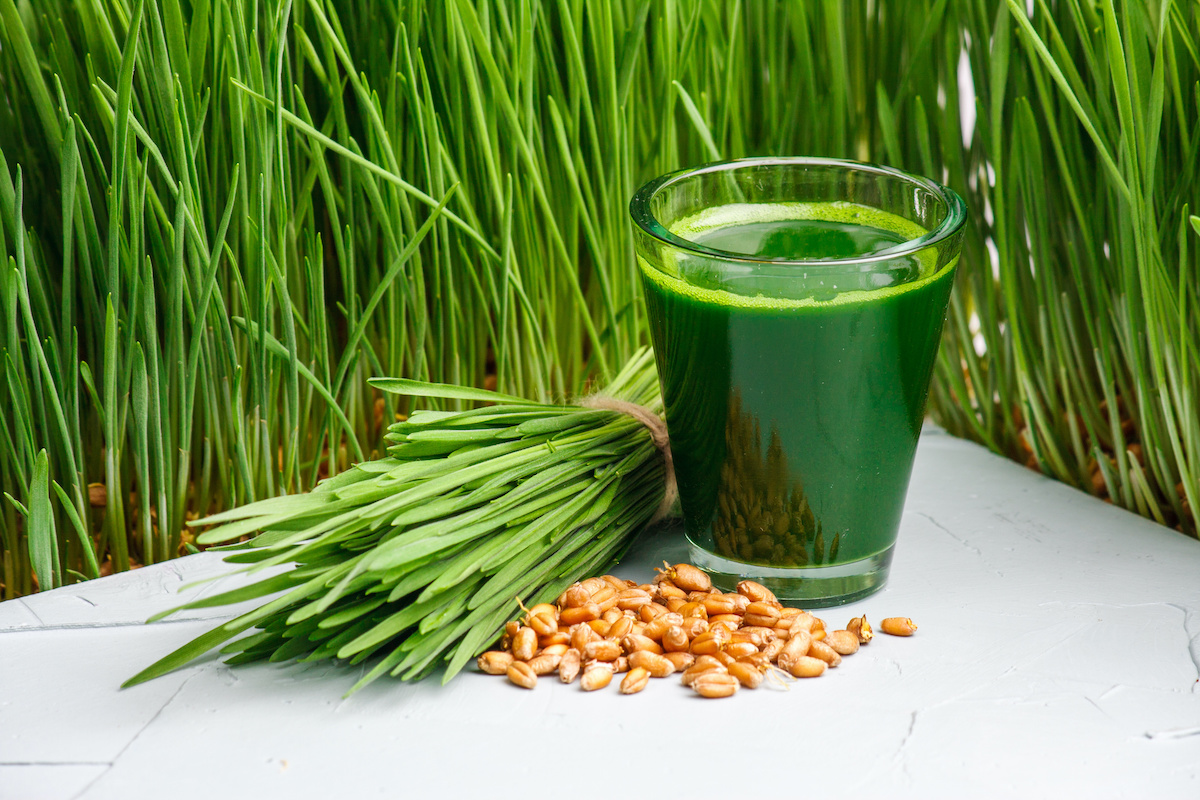You’ve likely heard of wheatgrass, the star superfood that has skyrocketed to popularity in the natural health world. While it may sound crazy to say that grass is a superfood, this powerful plant is loaded with nutrients and is often sold as a supplement or in juice or powdered form. However, you don’t need to take a trip to the health food store or pay a premium to enjoy the benefits of this tiny green, you can grow your own at home in just a few simple steps. Here’s exactly why you should consume wheatgrass and how to grow it yourself.
Benefits of wheatgrass
It is loaded with nutrients
Wheatgrass is full of critical nutrients that the human body needs to function, including vitamins A, C, and E, and amino acids, iron, magnesium, calcium, and flavonoids.
Reduce blood sugar
Certain animal studies on diabetic rats showed that wheatgrass consumption could actually lower blood sugar levels. More human studies are needed to confirm its effects on blood sugar, however.
Can help reduce bad cholesterol
Wheatgrass has been shown to help reduce levels of “bad” or LDL cholesterol in the body. In fact, one study showed that the effects of wheatgrass were similar to atorvastatin, a prescription drug that is used to lower cholesterol.
Could reduce chronic inflammation
Chronic inflammation is a silent killer and you could be experiencing its effects without even realizing it. Inflammation can contribute to severe health issues such as heart disease, cancer, and autoimmune disorders. Thankfully, wheatgrass can be a powerful ally in your fight against this dangerous condition. It is an excellent source of chlorophyll which causes plants to be green and has been shown to reduce inflammation in the human body.
Could battle cancer
Since it is so high in antioxidants, studies on the effects of wheatgrass against cancer cells show promising results. Test-tube studies have revealed that wheatgrass could decrease the spread of mouth cancer cells and leukemia cells. It could also help combat the adverse effects of chemotherapy and other traditional cancer treatments. More research is needed to confirm these benefits.
It can help you lose weight
Adding wheatgrass to your diet could actually help boost your metabolism which could aid in your weight-loss efforts. Of course, it is important that you pair wheatgrass consumption with an overall healthy diet and exercise and develop a good relationship with real food.
Can reduce digestive issues
Drinking a wheatgrass shot each day is a great way to help regulate your bowel movements and reduce constipation and diarrhea. Studies have also shown that it could be beneficial in alleviating the symptoms of ulcerative colitis.
How to grow wheatgrass
Wheatgrass is simply the young growth of wheat seeds and is enjoyed before it has a chance to mature. It is grown similar to other microgreens but is sprouted prior to planting.
What you need:
- Glass jar – for soaking and sprouting seeds
- Wheatgrass seeds – search for high-quality, non-GMO seeds
- Growing medium – soil, coconut coir, growing mat
- Spray bottle – fill with water
- Container with drainage – can be a shallow growing tray or pot
- Cheesecloth to cover the glass jar
What to do:
- Soak seeds overnight in a wide-mouth glass jar, making sure to cover seeds well as they may expand and soak up some of the water.
- After 12 hours, rinse and drain seeds.
- Use a cheesecloth to cover the top of the jar (you can attach it with a rubber band or the outer rim of the lid) and prop the jar on its side in a bowl to drain.
- Let it drain throughout the day and then soak overnight again and repeat the rinsing and draining process. After this second round of soaking and draining, you should notice small white “tails” on almost all of the seeds.
- Once they have sprouted, rinse seeds one more time.
- Add your growing medium to your tray. If using a growing mat or another soilless medium, be sure to soak it beforehand.
- Scatter seeds evenly across the tray.
- Cover with a piece of cardboard, newspaper, or another slightly porous surface that will allow air but not light to penetrate to the tray.
- Mist a few times a day during this blackout phase.
- Once the seedlings are about one inch tall (usually about three to five days), uncover and mist daily to keep the growing medium wet.
- Harvest when wheatgrass is around six inches tall (usually one week after uncovering) by cutting it at the base using clean, sharp scissors.
How to enjoy wheatgrass
Though you can use wheatgrass like other microgreens as a garnish or salad addition, most people choose to juice it and enjoy daily wheatgrass “shots” to reap all of the amazing health benefits. Try running it through your juicer with some lemon or ginger to boost the flavor and nutritional value.
If you have any adverse effects to wheatgrass or it shows signs of mold or spoilage, do not consume.
-The Backyard Garden Team







